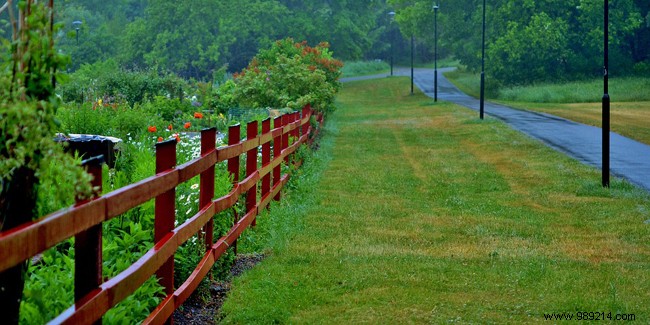
Seemingly innocuous, the creation of a fence is nevertheless a delicate operation because it is governed by a certain number of particularly strict rules. To avoid possible problems, it is important to be familiar with the regulations governing this type of project.
Since 1986, it is no longer necessary to apply for a building permit from the town hall for the creation of a fence. Ditto for the declaration of works, which is no longer mandatory from October 1, 2017. On the other hand, a prior declaration may be essential in accordance with article R 421-12 of the Town Planning Code.
This is why it is recommended to take prior knowledge of the Local Urbanism Plan of the municipality to know whether or not the project requires this prior declaration. If, indeed, this approach is required, it will be necessary to provide several documents (mass plan, site plan, materials used, site plan) which must be accompanied by the CERFA 13703 declaration duly completed. This prior declaration is especially required if the work is carried out on a protected site, in a heritage protection zone, in the field of visibility of a historic monument, within the perimeter of a listed natural monument or on a listed site. . If the house is located in these areas, obtaining permission from the town hall may take some time because it must still be approved by an architect of the buildings of France to decide if the project is feasible.
Before any construction of a fence, it is essential that the owner scrupulously respects the PLU. If the house is located in a housing estate, compliance with the internal regulations is a priority, particularly with regard to the color of the fence or the materials used. Similarly, maximum or minimum height rules may be imposed. But if this information is not communicated, you just have to know that in urban municipalities, the fences have a height between 2.60 m and 3.20 m.
A certain distance is also to be respected in relation to neighboring properties. The same applies to the distance vis-à-vis the public road. The owner must always check with his town hall to find out about the rules relating to this process.
In the case where the neighbor also expresses the wish to build a fence within his property, it is possible for the two concerned to agree and build together a dividing wall which will be their property to both of them. This solution offers many advantages. In addition to allowing significant savings since the construction costs will be shared between the two neighbors, it also allows a significant saving of space. On the other hand, it will be necessary to agree on the repair and maintenance of the party wall because the charges must be decided. According to the law, it is possible to lose this joint ownership if one of the parties does not participate in the payment of maintenance costs. A notarial deed will then be necessary. This rule is valid only if the wall is not included in the construction.